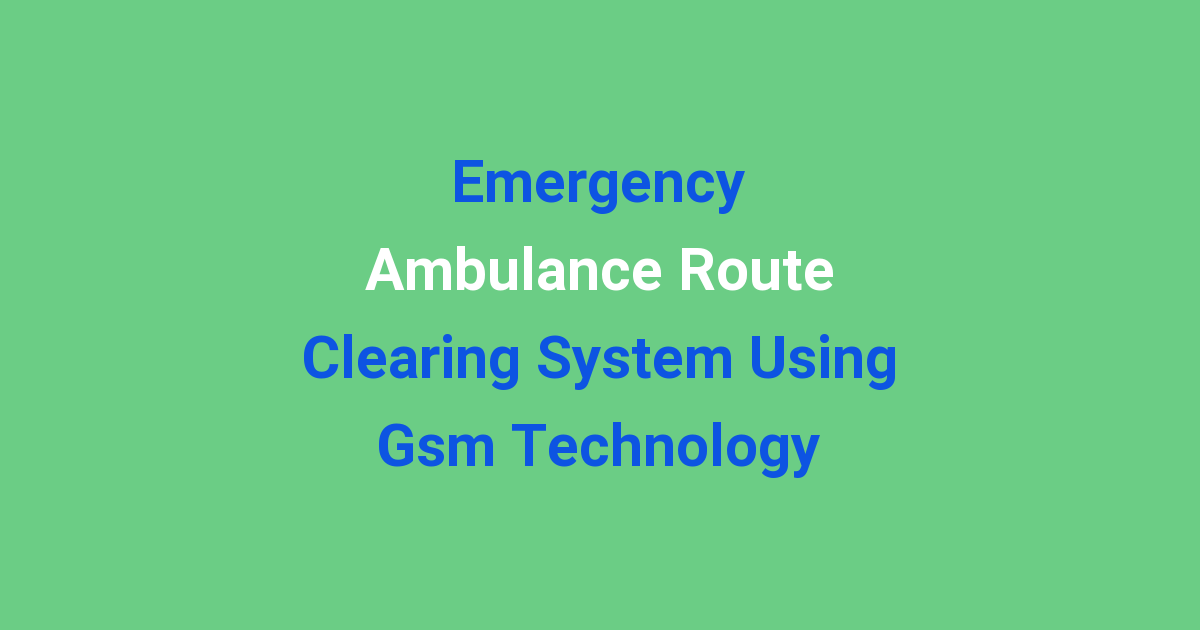Emergency ambulance route clearance system using GSM technology.
Emergency Ambulance Route Clearing System Using GSM Technology
Introduction:
In times of emergency, every second counts. Ambulance services play a vital role in ensuring that patients receive timely medical care. However, one of the major challenges faced by ambulance services is navigating through traffic congestion to reach the patient’s location quickly. This project aims to address this issue by proposing an emergency ambulance route clearing system using GSM technology.
Problem Statement:
Traffic congestion is a common issue in urban areas, which can significantly delay ambulance services. In emergency situations, every minute of delay can be critical and can have a direct impact on the patient’s outcome. The existing system does not provide an efficient solution for clearing the route for ambulances in real-time. This project seeks to develop a system that can help ambulance services navigate through traffic congestion quickly and effectively.
Existing System:
The existing system relies on manually clearing the route for ambulances by coordinating with traffic authorities. This process can be slow and inefficient, as it relies on human intervention. In addition, there is no real-time monitoring of traffic conditions to predict and clear the route for ambulances. As a result, ambulances often face delays in reaching the patient’s location, which can have serious consequences.
Disadvantages:
1. Delay in reaching the patient’s location due to traffic congestion.
2. Inefficiency in manually clearing the route for ambulances.
3. Lack of real-time monitoring of traffic conditions.
4. Potential impact on the patient’s outcome due to delays in medical care.
Proposed System:
The proposed system will use GSM technology to monitor and communicate real-time traffic conditions to ambulances. This system will have sensors installed at key traffic points, which will collect and transmit traffic data to a central server. The server will then analyze the data and provide route recommendations to ambulances based on the least congested routes. In addition, the system will have the capability to communicate with traffic signals to clear the route for ambulances in real-time.
Advantages:
1. Real-time monitoring of traffic conditions.
2. Efficient route recommendations for ambulances.
3. Quick clearance of route for ambulances.
4. Improved response time for emergency medical services.
5. Enhanced patient outcomes due to timely medical care.
Features:
1. GSM technology for real-time communication.
2. Sensors for traffic data collection.
3. Central server for data analysis.
4. Route recommendations based on least congested routes.
5. Communication with traffic signals for route clearance.
Conclusion:
In conclusion, the emergency ambulance route clearing system using GSM technology has the potential to revolutionize the way ambulance services operate. By leveraging real-time traffic data and communication technology, this system can help ambulances navigate through traffic congestion quickly and efficiently. This project addresses the existing challenges faced by ambulance services and proposes a solution that can significantly improve response times and patient outcomes. With the implementation of this system, emergency medical services can provide better care to patients in critical situations.

